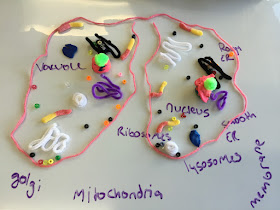Last year when it came time for the respiration lab, we dutifully put together the microrespirometers to complete the lab. It was fairly labor-intensive, with gluing in the capillary tubes, and gluing on nuts and bolts to make sure the respirometer would sink in the water bath. We had a few leaks, and not all of the respirometers gave us reliable data.
At some point, I read the tips on the College Board website for this lab. One teacher mentioned that her class made respirometers with test tubes, one-hole stoppers, and a 2 mL pipet. I spoke with another teacher at an AP Biology workshop I attended last year, and she did the respiration lab with crickets. I decided to give both ideas a try this year.
Before the lab, I made a trip to Lowe's to figure out how to keep the respirometers from floating. Steel pipe couplers provided the solution, The test tubes slid right into them. I also did some searching to find a respiration lab that used crickets. I found one I liked on Mr. Yeung's website. Here's the
link to the lab. The key change we made was using germinating peas instead of meal worms to go along with the crickets. Fortunately I found these white plant trays in the science closet at school, which worked great for the water baths. We also took readings every 2 minutes for 20 minutes.
What a difference a few changes make! The test tube respirometers worked fabulously. We had no leaks, and had good readings for most of the respirometers. A storm was moving through the day we did the lab, and we saw some movement of water into and out of our control respirometers with the plastic beads. We were able to use those readings to make some corrections to the corresponding respirometers. Our biggest challenge was getting the crickets into the test tubes! I am happy to report that all of the crickets survived the experiment.
Next year, I'd like to try KOH pellets or soda lime pellets instead of the liquid KOH we use. I've seen several teachers mention they like using the pellets better.












